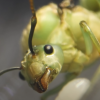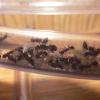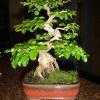Hello Zhuge;
Tapinoma sessile are one of my favourite ants to keep. I even recommend them as a beginner species, mainly because of how easy they've been for me to capture. These ants are highly mobile and will move an entire colony if you provide them with an environment that's attractive to them. In my gardens I've found entire colonies living in a wide range of places ranging from a hollow aluminum tent pole under my grape vines to old hollow tomato stems and old hollow rhubarb stems. They were all located in places where they were heated by the sun for at least part of the day. ReignofRage is absolutely correct that they'll be attracted to a heat source. To capture a colony outside, like the one I got last summer under my picnic table, I just covered part of the "trap" with black cloth and let the sun warm it during the day.
In a house I'd try to locate your trap in a warm spot near their nest such as a hot air vent, hot air furnace pipe, top of a water heater, top of plant lights, top an old fridge, or a plug-in heating pad, that might be enough to attract them. Provide them with a sugar/water feeder and a water feeder inside the trap and they'll move their brood closer to the food source instead of carrying the food a distance back to the nest. I usually find these ants living in hollow things, so a number of test tubes in a formicarium should be good for keeping their brood. Tapinoma sessile colonies have multiple queens, so give them time to move all their brood to the trap. You'll know they're done when they stop going back to the old nest.
.
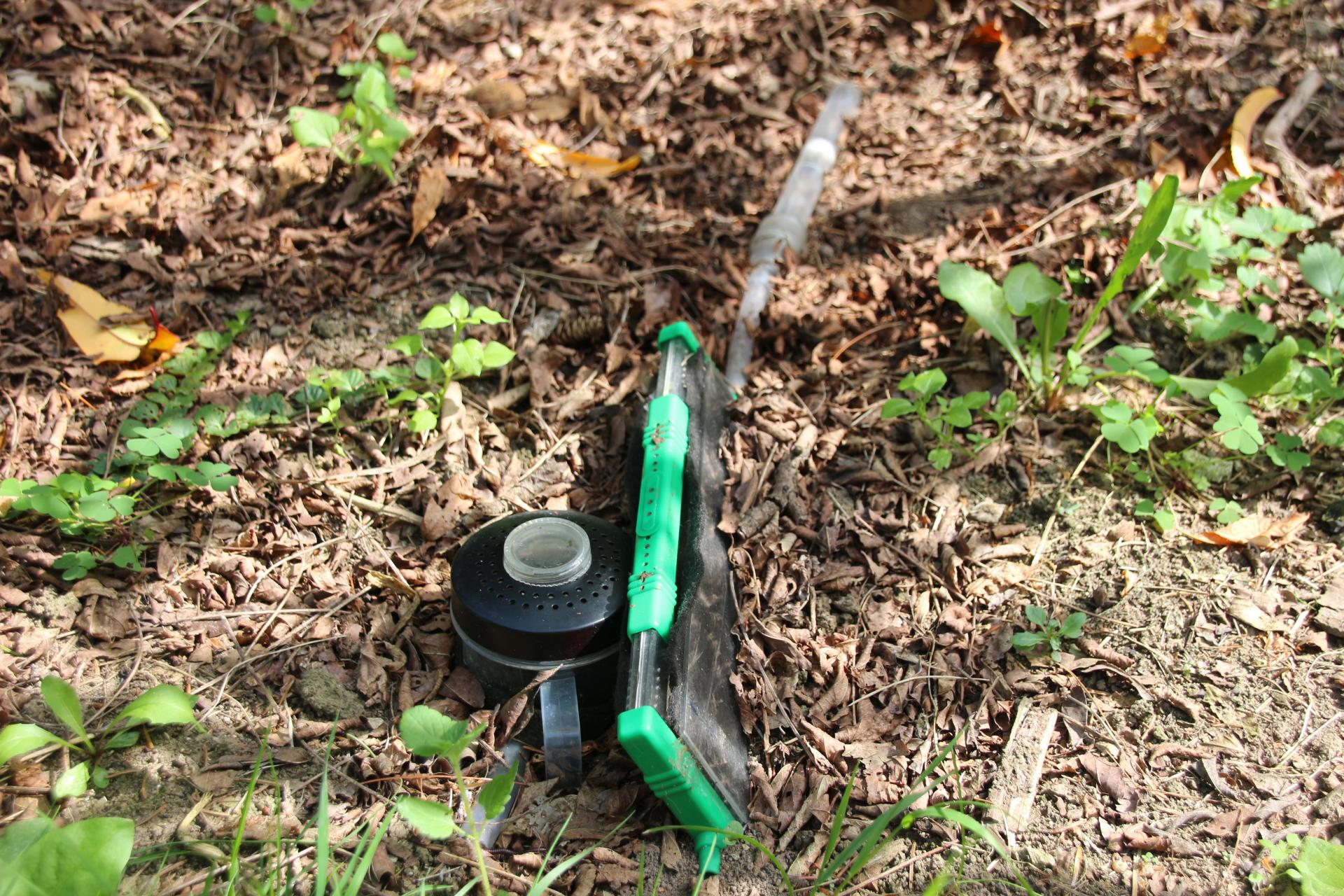
This is the first trap I set up in my garden to capture a Tapinoma sessile colony. It's an "Uncle Milton" ant farm with modified chambers. It's partially buried to provide a cooler area at the bottom, but the top half is covered with black cloth to be heated by the sun. I also fed sugar/water at the far end and the entrance was via the small port at the near end. I also fed meat and insects through a port at the top. I left this setup in the garden all summer, but a colony moved in almost immediately, as soon as they found the sugar/water. I learned a lot by just watching this colony and observing their behaviour. This kind of ant keeping, like adopting a colony, is a great way for a beginner to "keep" ants without the concerns of keeping them in a house, while still learning from them.
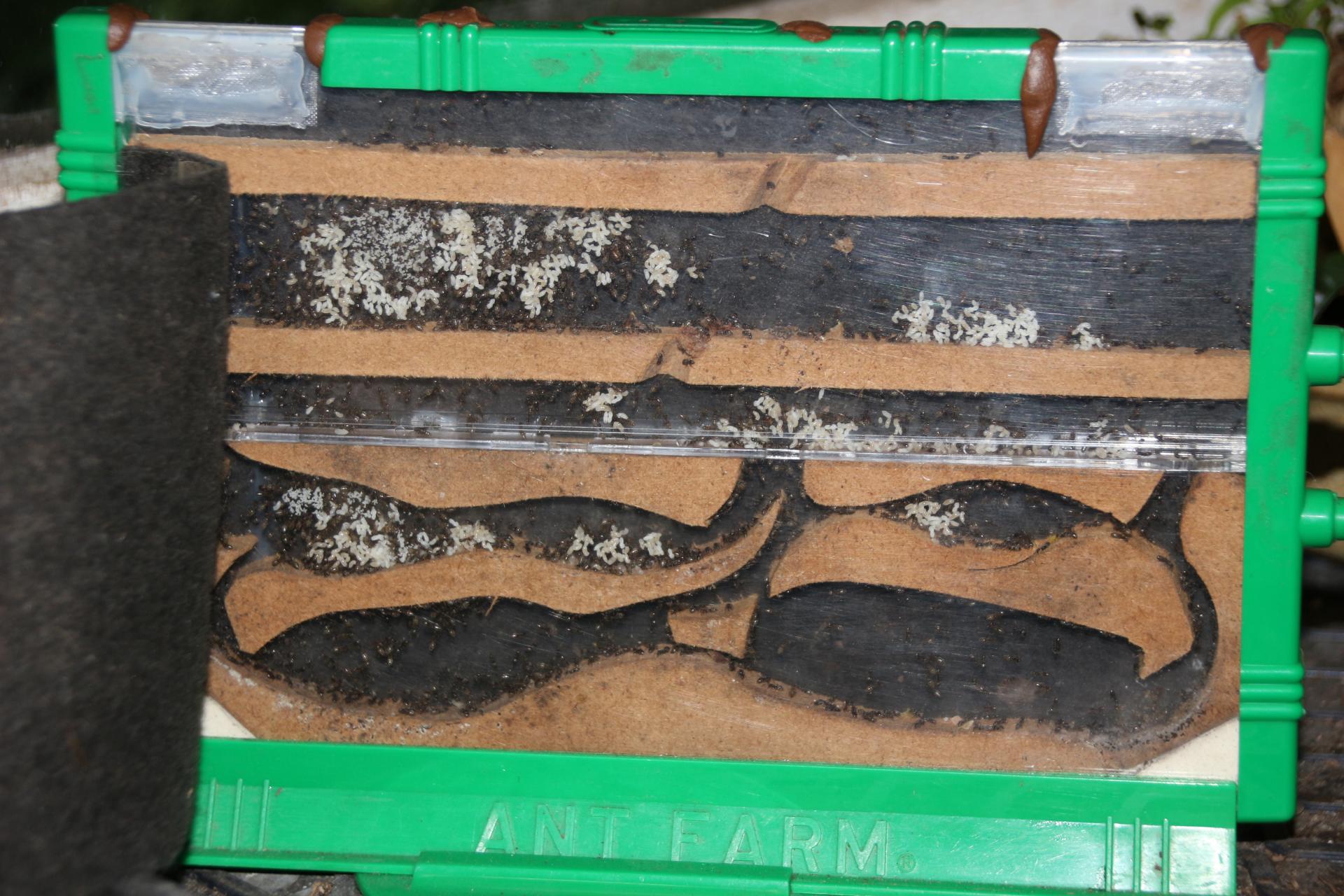
This is the colony I eventually brought into my workshop. A year later I set up the same trap beside a Lasius colony. They were quite happy to eat sugar/water and insects in there all summer long, but when I finally dug it up, they hadn't moved a single egg inside. Perhaps a little distance between the nest and the trap is necessary for them to make the commitment and move the colony. Also, there aren't that many ants that are as willing to relocate as Tapinoma sessile.
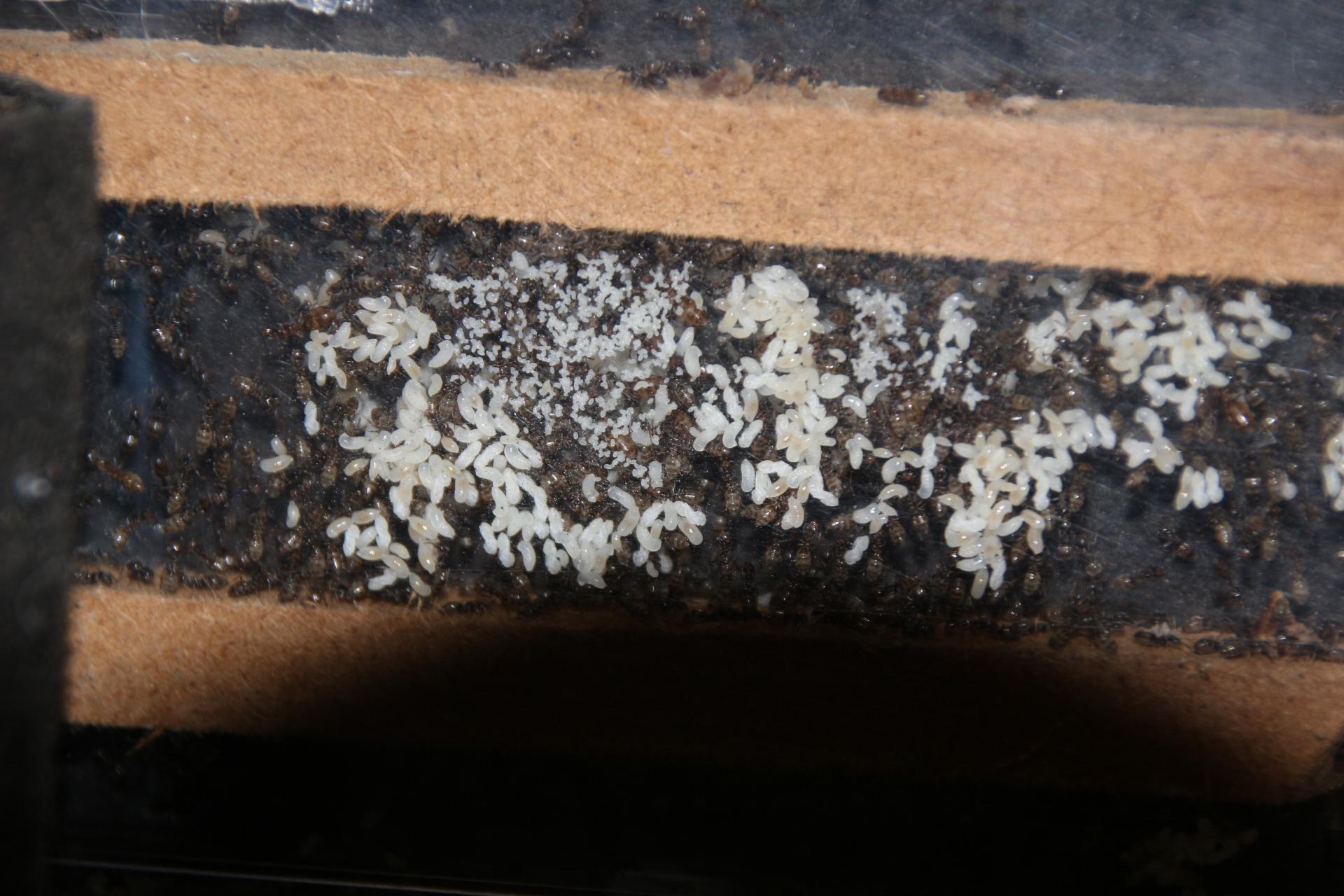
In this close-up you can see the brood clusters. I believe these clusters correspond to the various queens in the colony. Each cluster contains eggs, larvae and pupae from a single queen. As you can see, some are more productive than others.
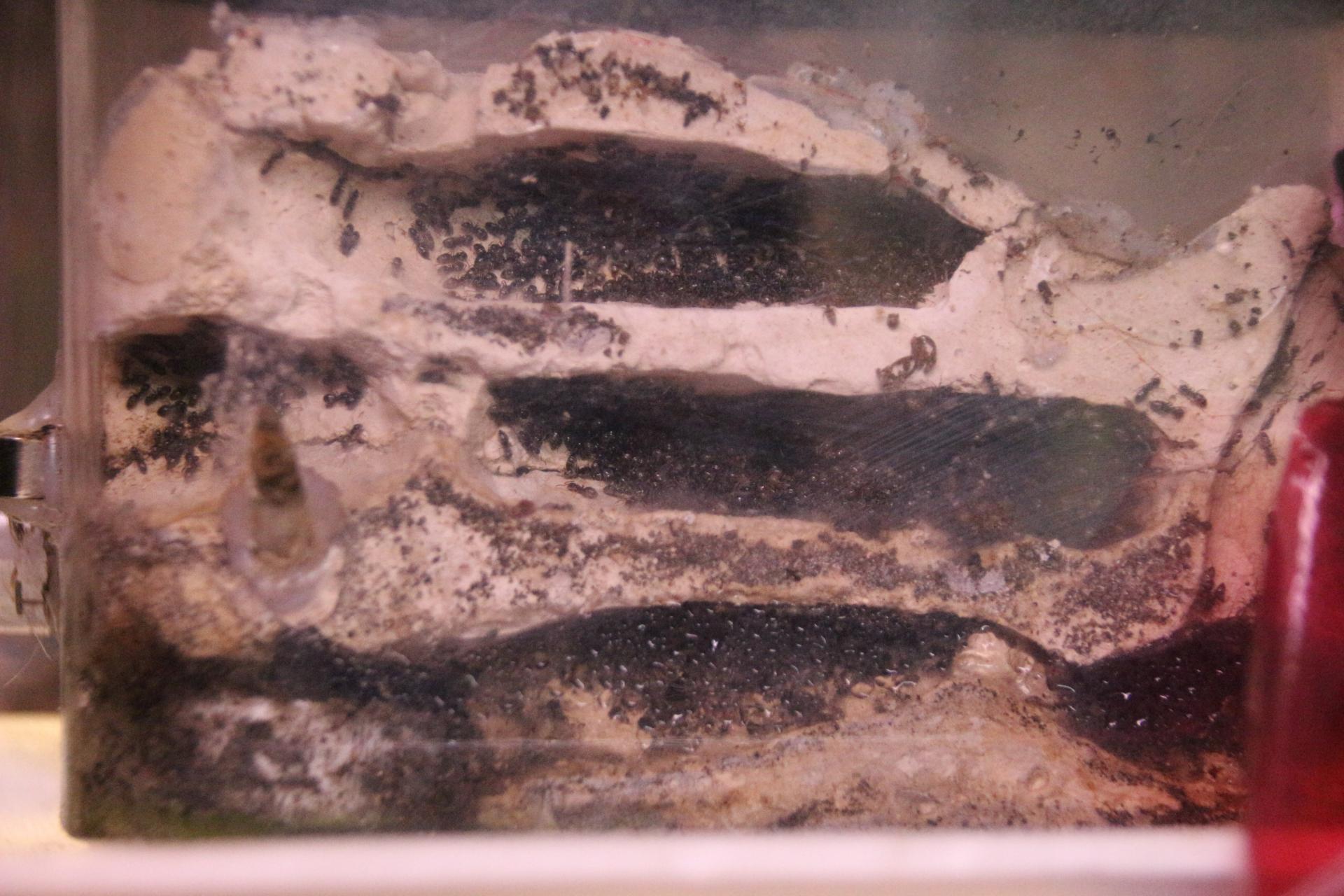
This is the colony I captured under my picnic table last summer. It only took a couple of days for them to move in, extremely wet weather probably hastened the move.
If you provide a Tapinoma sessile colony with all the desirable elements of a nest as outlined above, you should have no problem attracting them to move in. An added benefit of capturing them is that they won't be foraging in your kitchen anymore. Although these ants can be significant pests, they're a lot of fun to keep as pets.
RPT
My father always said I had ants in my pants.

